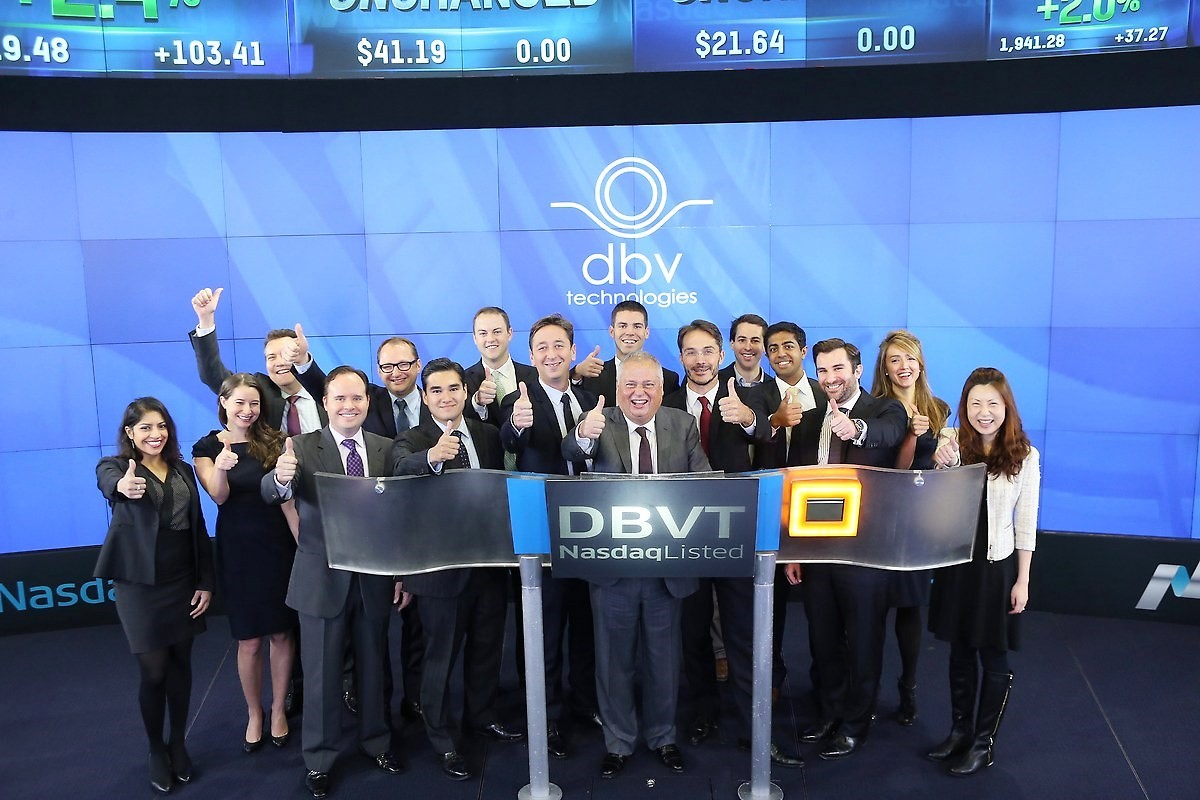
In October last year, DBV Technologies (NASDAQ:DBVT) hit the markets with a pretty disappointing IPO, closing out at an average of around $21 per share versus its pre-IPO target of a little over $23 a share. However, over the last eight or nine months, the company has really found its stride, and we are now trading around $42 a share – 85% up on its IPO pricing and a nice return for those that got in last October. Just this week, we learnt that the company is taking advantage of its current rosy market situation, and launching a follow-up share offering to fund – among other things – a phase 3 program for its lead candidate – Viaskin. The question now facing potential contributors to this follow-up offering is simple. With hindsight, a $21 a share offering presented a discounted opportunity to gain exposure to what would turn out to be one of the hottest development stage biotech’s of the last six months. However, with the stock now up nearly 85%, is an entry at this price still a discount on a long-term valuation? If the answer is yes, then the follow-up is worth taking part in. If no, it is best left alone until we actually see some progress from the trial that the company is looking to fund. So, with this said, let’s have a look at the offering itself, and attempt to come down on either side of the question.
So, first, let’s take a look at the drug the company is looking to fund. As we have said, the candidate is called Viaskin, and currently has two primary indications – peanut allergy and cow’s milk protein allergy (CMPA) in children. In both incidences, the treatment uses a patch that contains an allergen protein in its original antigenic state. When exposed to the skin, the allergen is exposed to the allergen protein over an extended period of time. This extended exposure translates to activation of regulatory T cells, which not only treat allergies during exposure, but also (due to the nature of the human immune system) for a period once exposure ceases. Because the allergen is delivered to what are called Langerhans cells, they avoid the bloodstream and – in turn – avoid systemic allergic reactions, something that can vastly improve the safety profile of the treatment and give it an advantage over current standard of care.
So where are we with trials? The vast majority of the funds will go towards advancing the former of these two indications – the peanut indication – into phase 3 trials. With this in mind, let’s focus on the peanut indication for the purposes of judging the company’s current position in the market.
In September last year, we learnt the topline results for a phase IIb trial of 221 peanut allergic subjects across four treatment arms (three variable and increasing dosage levels and one placebo). At the beginning of this year, we heard a full study report during the 2015 AAAAI Annual Meeting in Houston, Texas. The trial showed efficacy, with 50% reaching primary endpoints compared to 25% on the highest dose level across all responders, and further, 53% exhibiting efficacy versus 19% in the child focused arm of the trial, designed to study children ages six to 11. Further, and just as importantly, safety was confirmed, with no treatment-related adverse events reported.
Things look promising so far, so what are the terms of the offering? Well, the company is offering 3.6 million shares in the form of 7.2 million American depositary shares (ADS), with each ADS representing one half of one ordinary share. Estimated net proceeds come in at around $230 million, slated to a public offering price of $34 per ADS. As we have said, the vast majority of the proceeds will go towards the phase 3 trial, and it is this trial that could be the primary driver behind any upside revaluation in DBV stop going forward.
So what are the risks? Well, as usual, there is the risk of non completion of the trial. Some of this is mitigated by the upcoming financing round, but if we fail to see the efficacy seen in the phase IIb, progress could falter. We also have to consider competition, and potential market size/saturation. Interestingly, in this instance, not from a direct comparable treatment, but from current standard of care – EpiPen, manufactured by generic drug incumbent Mylan NV (NASDAQ:MYL) in conjunction with King Pharmaceuticals, which since a recent takeover is now an arm of Pfizer Inc.(NYSE:PFE). Sales of the EpiPen reached $1 billion for the first time early this year. Obviously the EpiPen controls the market at present, and unlike the treatment offered by DBV is a responsive treatment rather than preventative, but with a current market cap of $1.5 billion, it is easy to see how an approval for the peanut indication, followed by a small grab of market share (low double digit percentage) could turn Viaskin into a hit for DBV. Further, this is only one indication – the potential going forward is even bigger.
So, with all this said, where do we stand on the follow-up offering? Well, simply put, it looks attractive. Yes, DBV is 85% up on its IPO price, but as we head into phase III trials, all and any news releases have the potential to drive volatility. Get on the right side of this volatility, and we could see another similar upside revaluation during the next 12 months.
More stories from Market Exclusive:





